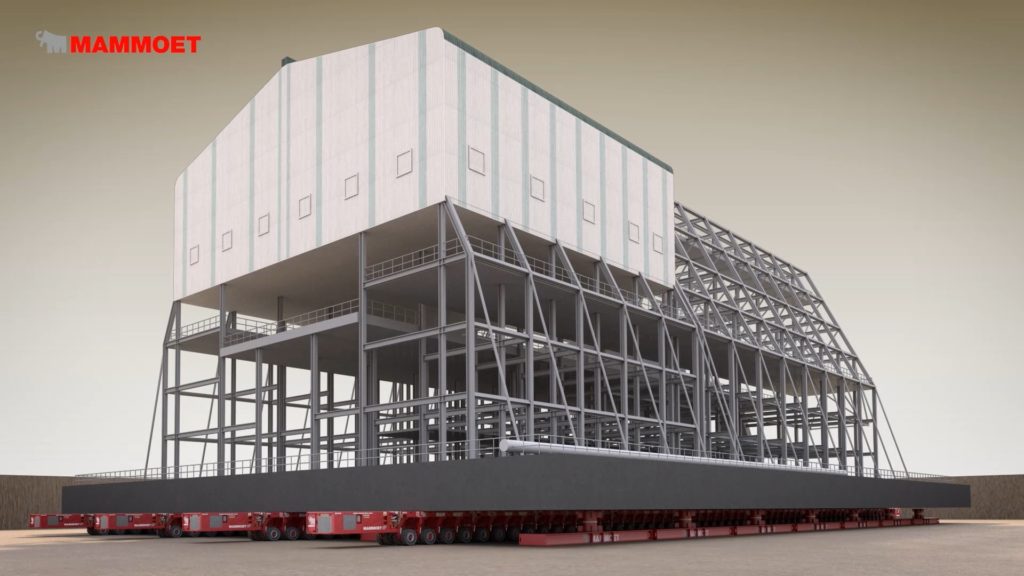Kenmare Resources’s board is backing a plan to relocate its Wet Concentrator Plant (WCP) B to the Pilivili ore zone at its Moma titanium minerals mine, in northern Mozambique, after a definitive feasibility study (DFS) indicated the move could deliver an additional 130,000 t/y of heavy mineral concentrate (HMC) from 2021.
The DFS, completed by Hatch Africa, confirmed the technical and economic feasibility of relocating WCP B to Pilivili, following the completion of the existing mining path at Namalope in the September quarter of 2020, Kenmare said.
The WCP B relocation is the last of three internal growth projects required to increase production to 1.2 Mt/y of ilmenite (plus co-products of zircon and rutile), according to the company.
WCP B and its dredge will be relocated by specialist heavy lifting and transport contractors on a purpose-built road from Namalope to Pilivili, according to Kenmare. The company’s updated investor presentation displayed a graphic of self-propelled modular transporters provided by Mammoet.
The key additional infrastructure required to commence production from Pilivili includes a HMC pumping system and power infrastructure, in addition to a 23 km purpose-built road.
The contractor will use self-propelled modular transporters to transport WCP B out of its mining pond at Namalope, along a road, including a causeway estuary crossing into the new mining pond at Pilivili. This is the same type of equipment that was used to transport the recently completed WCP C dredge in the Netherlands, Kenmare said.
The company posted a video of a simulated move here, which featured equipment from Mammoet.
The relocation and re-establishment of WCP B is expected to commence in the September quarter of 2020 for a period of up to 12 weeks, with the commissioning of WCP B at Pilivili anticipated in the December quarter of that year. During this 12-week period, production from WCP B is expected to be suspended.
“Additional mining areas have been identified for WCP B at Namalope to ensure that production is maintained, in the event of delays to the project execution schedule,” Kenmare said.
The Pilivili ore zone has the highest grades within Moma’s portfolio, with mineral reserves of 220 Mt averaging 4.4% total heavy mineral (THM). The life of mine average grade mined by WCP B at Pilivili is expected to be 4.6% THM and in the first four years of production the average grade mined is expected to be 5.3% THM. Due to these higher grades, production from Pilivili is expected to increase overall HMC production by an average of 130,000 t/y, contributing to a total of 1.2 Mt/y of ilmenite production (plus co-products) from 2021.
Additionally, Pilivili’s mineral reserves have higher zircon and rutile co-product credits than Namalope (with 0.25% zircon and 0.08% rutile in ore), which are expected to contribute to lower cash operating costs per tonne of ilmenite.
The total capital cost estimate for the relocation is $106 million, including $15 million contingency, which Kenmare expects to fund from its balance sheet and internally generated cash flow.
The most significant infrastructure requirement for the relocation of WCP B is the construction of the purpose-built road for the transportation of WCP B and its dredge. The road will be 23 km in length and 66 m wide, and construction is expected to take approximately eight months from the September quarter. HMC produced at Pilivili will be transported to the MSP using a 16 km overland pipeline and positive displacement pumping system. Electrical power at Pilivili will be provided by a new 16 km 110 kV power line adjacent to the purpose-built road, supported by a static synchronous compensator to improve reliability.
Kenmare received approval of the Environmental, Social and Health Impact Assessment (ESHIA) ESHIA for Pilivili from the Ministry of Land, Environment and Rural Development in Mozambique in May 2019, in line with the project delivery timeline. The company expects the ESHIA for the purpose-built road to be approved in the September quarter.
The contractor will use self-propelled modular transporters (“SPMTs”) to transport WCP B out of its mining pond at Namalope, along a purpose-built road, including a causeway estuary crossing into the new mining pond at Pilivili. This is the same method that was used to transport the recently completed WCP C dredge in the Netherlands.











